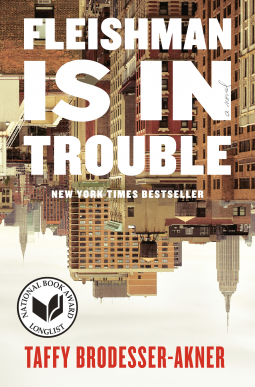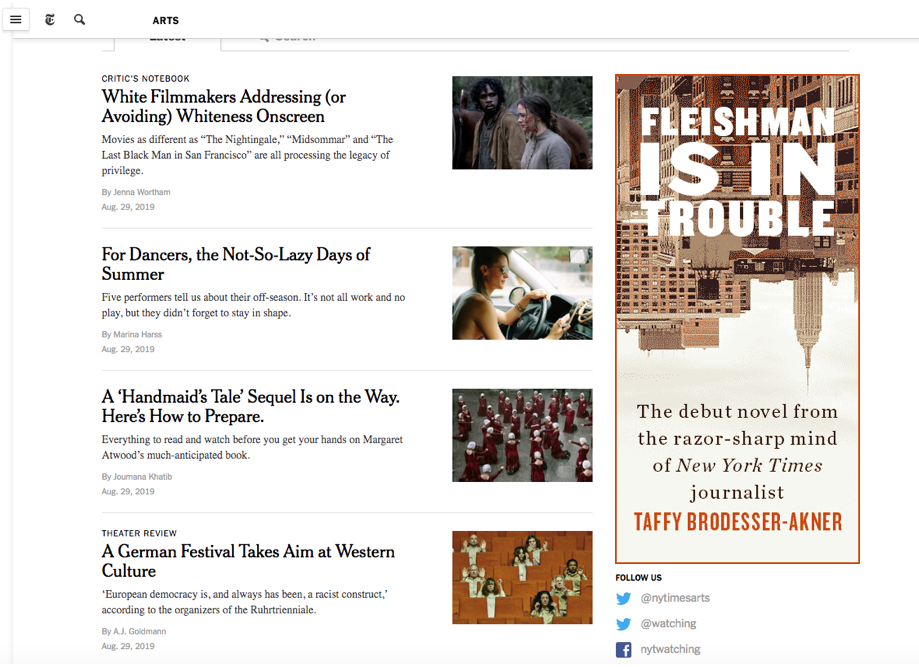How Random House used NetGalley data to refine their marketing messaging and proactively find engaged readers for a big summer debut
Taffy Brodesser-Akner is by no means an unknown writer. As a staff writer for the New York Times magazine with a prolific Twitter account, she already has an audience. But when launching her debut novel, Fleishman is in Trouble, the Random House team treated her book just like they would for any debut novelist coming out with a big summer book.
They dug into NetGalley data to see what was resonating with readers about her book , used NetGalley reporting to find fans of comp titles, and targeted book club leaders and readers. Plus, they leaned on Brodesser-Akner’s own self-promotion efforts via social media.
Jess Bonet, Marketing Manager at Random House, shares how she helped turn Fleishman is in Trouble into one of the hottest summer reads, and a New York Times bestseller.
How did Taffy Brodesser-Akner’s unique position as an established writer and debut author guide your campaign strategy for Fleishman?
For Fleishman, we pulled out all the stops as we would for a debut author: Heavy consumer-reads push on platforms like NetGalley and GoodReads and major book club leader outreach. Random House has a built-in book club platform called The Random House Reader’s Circle. Using that platform, I was able to reach book club leaders through the RHRC newsletter, social media and physical mailing address lists. I also targeted Instagram book clubs like Pure Wow that ran pre-pub giveaways to engage their fans. I provided book club leaders with eCards featuring blurbs and media praise for Fleishman is in Trouble.

by Taffy Brodesser-Akner
But what was unique about this project is that we were also able to use Taffy’s strong platform (she is a natural on social) to drum up excitement in the months leading up to publication. s.
We also ran advertising on the New York Times website to convert fans of her journalism into fans of her new novel.

Plus, we ran advertising in Shelf Awareness and included a link to NetGalley on the landing page for easy bookseller access.
How did you involve Brodesser-Akner in launch campaign?
Brodesser-Akner played an integral role in the launch campaign for Fleishman is in Trouble. She did a fantastic job promoting the book on social and making her fans aware that her debut novel was coming soon, even though she did not specifically promote its NetGalley listing on her own channels.
How did you proactively engage NetGalley members and communicate with them?
We shared NetGalley widgets with reviewers of other Random House titles in the same category. I pulled Feedback Reports for users who requested similar Random House fiction titles, and gave access to people who rated the comparative titles 4 stars or higher.
I pulled Feedback Reports for users who requested similar Random House fiction titles, and gave access to people who rated the comparative titles 4 stars or higher.
We also emailed all reviewers [who submitted Feedback for Fleishman] and provided them with social assets on publication date to push reviews to retailer platforms and get the book in as many social feeds as possible. Social buzz was one of the major drivers of this campaign, and it continues to grow which is wonderful to see.
You included Fleishman in two different NetGalley newsletters in March 2019 – Women’s Fiction and Debut Authors. Why were these newsletters and this timing the right marketing choice for you? What impact did you see?
For the blasts, we knew we wanted to capture both audiences: Women’s Fiction readers and the spotlight for Debut Authors. The fact that they were both in the same month was a great benefit to us, because it drove more awareness on the site, creating a snowball effect that led to increased number of requests driving to publication. For members subscribed to both newsletters, it’s always great to hit that audience again and make the reader feel like this is a book of the moment and read because they are seeing it everywhere.
We came to realize that readers were really responding to Taffy’s raw honesty about dating and marriage in the 21st century, so we played that up in our ad copy and our copy feeding to retailers.
How did you go about managing requests for such a popular title?
We were liberal with accepting requests for this title because we wanted to saturate different segments at the same time. We wanted to get engage booksellers, Instagram influencers and bloggers, as well as librarians.
Which NetGalley reports or analytics are most important to you and your team? How do you use them?
The Feedback Report is the tool we most commonly use. It’s so helpful to see what’s resonating with readers before a book goes on sale, so we can adjust our messaging accordingly. Around 3 months before a book goes on sale, our team will meet and discuss review feedback, largely from NetGalley, and adjust copy as necessary.
That’s truly my favorite part of using NetGalley: being able to see feedback in real-time about what readers are actually responding to, versus our messaging. We came to realize that readers were really responding to Taffy’s raw honesty about dating and marriage in the 21st century, so we played that up in our ad copy and our copy feeding to retailers.
Jess Bonet is a Marketing Manager at Random House, working on campaign planning and marketing strategy for authors including Chelsea Handler, Brené Brown, George Saunders, Jia Tolentino, Téa Obreht, Salman Rushdie and more. In her spare time she writes and produces an upcoming comedy-horror web series, Are You Afraid to Adult?
Interviews have been edited for clarity and length.
Read the rest of the NetGalley case studies here!
